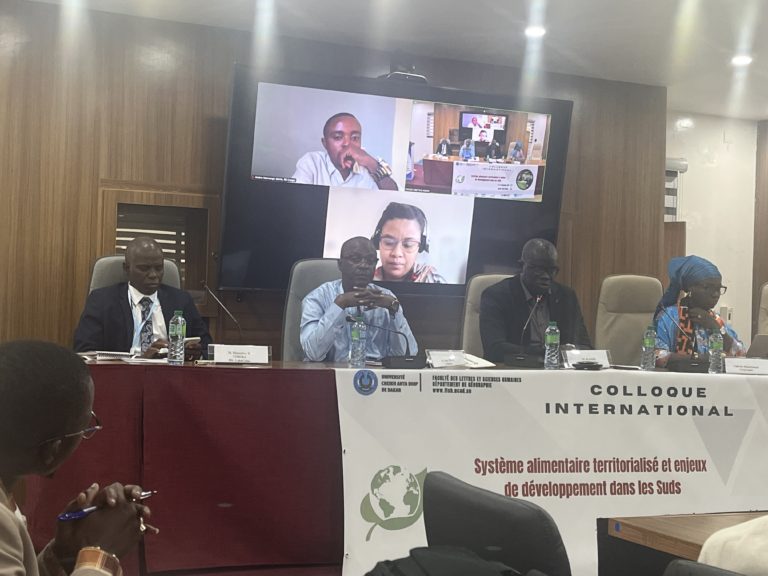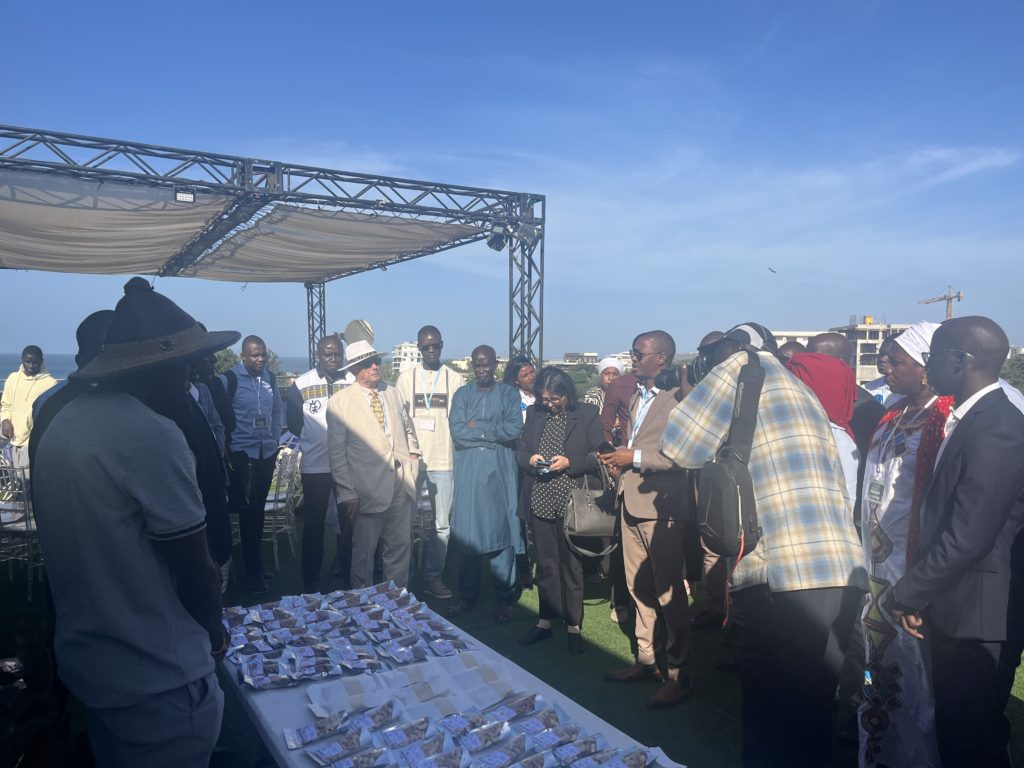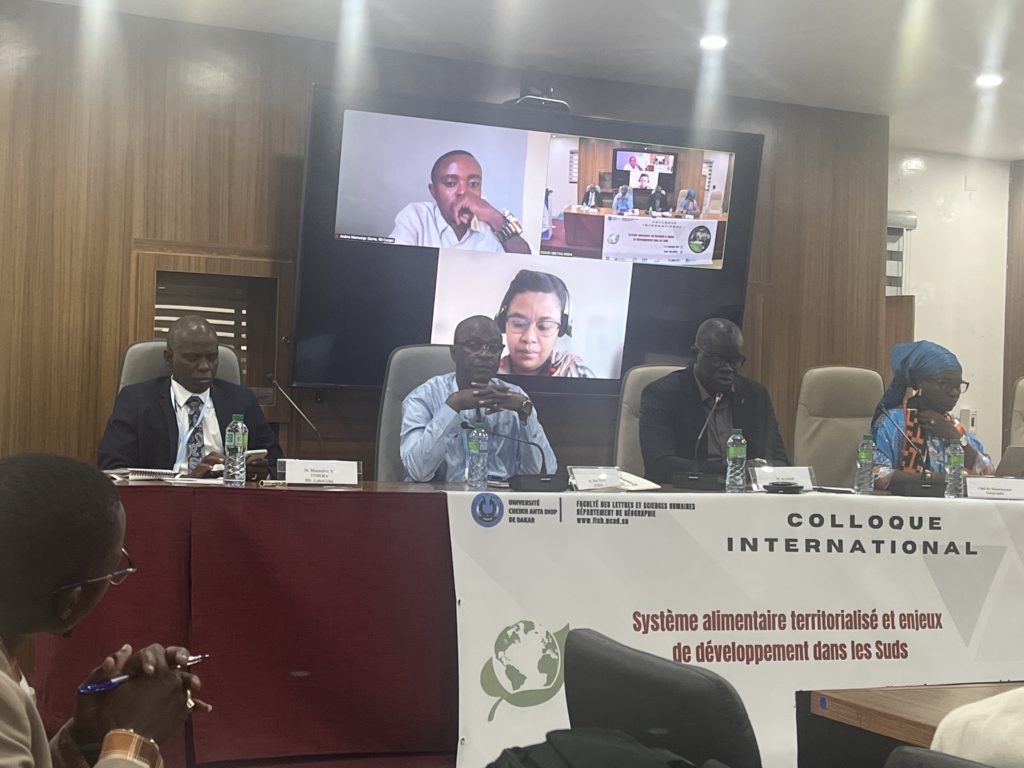Works by students and researchers in India
- Home
- Scientific production
- Works by students and researchers in India
Auteur : Tristan Le Pape
Résumé : Les réservoirs à ciel ouvert jouent un rôle central dans la gestion des ressources en eau en Inde du Sud, notamment dans l’État du Tamil Nadu. Toutefois, leur recensement reste incomplet et leur suivi, particulièrement en milieu rural et périurbain, demeure difficile en raison de leur grande variabilité saisonnière, de leur fragmentation spatiale et de leur faible reconnaissance institutionnelle. Cette étude propose une méthode de détection et de caractérisation des réservoirs fondée sur l’analyse multi-temporelle d’images radar Sentinel-1, en configuration SAR à double polarisation (VV/VH). L’approche développée repose sur une chaîne de traitement reproductible associant SNAP, Python, QGIS et ArcGIS Pro, intégrant des seuils empiriques définis à partir d’histogrammes de rétrodiffusion. Les résultats permettent de cartographier finement la dynamique intra- annuelle des plans d’eau et d’identifier les réservoirs à forte perte de surface, susceptibles d’être vulnérables ou sous-valorisés. En complément, une typologie spatialisée a été construite en croisant les indicateurs hydrologiques avec des critères issus de la littérature sur les usages sociaux et les logiques de reconnaissance territoriale. L’ensemble du dispositif méthodologique, représenté sous forme de logigramme, est conçu pour être reproductible dans d’autres contextes semi-urbains ou agricoles à forte saisonnalité. Cette approche contribue à renforcer les outils de diagnostic et d’aide à la décision pour la gestion différenciée des réservoirs, en articulant données satellitaires et connaissances territoriales.
Auteur : Nataliya Murzenko
Résumé : Ce mémoire explore l’intersection entre les pratiques alimentaires, le déplacement et le sentiment d’appartenance en milieu urbain à travers les concepts de démocratie et de souveraineté alimentaires. En se concentrant sur les réfugiés ukrainiens dans la région d’Indre-et-Loire en France, il examine comment l’alimentation contribue à la reconstitution du foyer, de l’identité et des liens sociaux dans des environnements urbains inconnus. S’appuyant sur la théorie de la production de l’espace d’Henri Lefebvre et sur la notion de Droit à la ville, l’étude considère la nourriture comme un outil matériel et symbolique de fabrication de lieu et d’intégration communautaire. À travers une approche méthodologique mixte — incluant des questionnaires et des entretiens qualitatifs — la recherche analyse l’accès aux aliments culturellement significatifs, les stratégies d’adaptation, et le rôle des événements alimentaires collectifs. Les résultats mettent en lumière le rôle de l’alimentation dans la création de capital social, la remise en question des systèmes alimentaires néolibéraux et l’autonomisation des groupes marginalisés dans la planification urbaine participative. L’étude appelle à des politiques alimentaires inclusives, reconnaissant la nourriture comme un droit fondamental plutôt qu’une marchandise, et la ville comme un acteur clé dans la construction de systèmes alimentaires équitables et durables.
Auteur : Manon Couder
Résumé : Ce travail étudie la pertinence actuelle des réservoirs à ciel ouvert dans le Tamil Nadu, en particulier dans leur capacité à répondre aux besoins en irrigation agricole. Grâce à une approche combinant télédétection, données hydrométéorologiques, modélisation hydrologique et observations de terrain, deux réservoirs ont été analysés : Osudu (zone rurale) et Kanagan (zone périurbaine). L’étude met en évidence une dynamique différenciée de remplissage et de réponse aux précipitations, corrélée à la taille du bassin versant et à l’occupation du sol. Les volumes d’eau disponibles sont comparés aux besoins en irrigation selon les cultures recensées localement. Les résultats suggèrent que des réservoirs bien localisés, comme Osudu, peuvent répondre aux besoins agricoles même en saison sèche. Ce rapport se place dans une optique de réintégration des réservoirs dans les stratégies de gestion territoriale de l’eau, notamment dans un contexte de changement climatique et de raréfaction des ressources hydriques.
Auteurs : Laura Verdelli et Bertrand Sajaloli
Un article disponible directement sur le site de Centraider

Résumé
En Inde du Sud, les pratiques agricoles doivent s’adapter pour nourrir une population grandissante dans le contexte actuel du changement climatique mais aussi des difficultés post-Révolution verte. L’agriculture indienne est confrontée à la diminution des ressources en eau, à la dégradation de la qualité des sols et à la pollution de l’environnement par les intrants chimiques. Des difficultés sanitaires sont également causées par des habitudes alimentaires à l’origine de maladies non-transmissibles comme le diabète, favorisé par la surconsommation de riz. Pour répondre à ces enjeux, les ONG suivies du gouvernement indien mettent en avant les millets. Autrefois qualifiées de nourriture des pauvres ou de culture de la famine, consommées uniquement par les castes les plus basses, ces céréales traditionnelles font aujourd’hui l’objet d’une vaste revalorisation à l’échelle nationale voire mondiale par l’instauration de l’Année Internationale du Mil en 2023, portée par la FAO. Les millets sont reconnus pour leurs qualités nutritives et écologiques, dont la culture participe à atteindre les objectifs de développement durable définis par l’Agenda 2030. Dans les Jawadhu Hills, territoire rural du sud de l’Inde, les millets sont anciennement cultivés par des pratiques manuelles, au rythme des moussons. La récente revalorisation des millets, accompagnés par les actions de la DHAN Foundation, participe au développement économique de ces agriculteurs. Cependant, les revenus générés par les cultures de millets sont insuffisants et la plupart de ces producteurs doivent partir en migration pour assurer leur sécurité financière et celle de leur famille. Dans ce contexte, le regain d’intérêt pour le millet est-
il tout à la fois vertueux sur les plans environnemental et de santé humaine, et propice au recul de la pauvreté et au développement dans des territoires enclavés et marginaux ?
Abstract
In India, farming practices must adapt to feed a growing population in the current context of climate change and post-Green Revolution difficulties. Indian agriculture has to cope with dwindling water resources, deteriorating soil quality and environmental pollution from chemical inputs. Health problems are also caused by eating habits that lead to non-communicable diseases such as diabetes, which is encouraged by over-consumption of rice. In response to these challenges, NGOs working with the Indian government are promoting millets. Once described as the food of the poor or a crop of famine, eaten only by the lowest castes, these traditional cereals are now being given a major boost on a national and even global scale with the launch of the International Year of the Millets, supported by the FAO. Millets are renowned for their nutritional and ecological qualities, growing them helps to achieve the sustainable development goals set out in Agenda 2030.
In the Jawadhu Hills, a rural area of southern India, millets have traditionally been grown by hand, to the rhythm of the monsoons. The recent revaluation of millets, supported by the DHAN Foundation, should contribute to the economic development of these farmers. However, the income generated by millets is insufficient, and most of these farmers have to migrate to ensure their financial security and that of their families. In this context, is the renewed interest in millet both virtuous in environmental and human
health terms, and conducive to poverty reduction and development in landlocked and marginal territories?
Author : Prasanth A.
Abstract : This report examines the patterns of food supply and consumption in the rural and urban contexts of the Pondicherry bio-region, focusing on key dimensions such as food security, equity, sovereignty, and democracy. It investigates how socio-economic, cultural, and gender factors influence dietary habits and access to food in two contrasting environments: the rural village of Krishnankuppam and the urban area of Ariyankuppam.
The report highlights the rural community’s reliance on traditional crops and the urban area’s greater diversity in food choices, driven by different socio-economic dynamics. Government policies, such as the Green Revolution and the Public Distribution System, have significantly influenced food practices, leading to a marked shift from millet to rice-based diets. An analysis of meal organization indicates that rural households depend on locally available produce, while urban households enjoy a wider variety of vegetables and fruits. Urban innovations in meal preparation showcase a blending of traditional and modern culinary trends, whereas rural practices are often constrained by economic and time limitations.
Socioeconomic disparities are particularly evident in rural areas, where lower-income groups struggle with food security. This challenge is reflected in the consumption of millet, with lower-income households often unable to afford these nutritious food options. When examining fruit and vegetable consumption, significant differences emerge, with urban households incorporating a wider variety compared to their rural counterparts. The study highlights the impact of socioeconomic status and market availability on these trends. Urban households consume more fruits due to better access and awareness, while rural households prioritize seasonal and locally available options.
The report also explores non-vegetarian consumption, observing preferences for seafood, chicken, and mutton in both rural and urban contexts, with urban households displaying greater frequency and variety. While seafood is popular across both contexts, affordability and availability play crucial roles in shaping consumption patterns. Rural households tend to rely on locally sourced options, while urban households benefit from broader market accessibility. Food supply patterns vary significantly between rural and urban households, reflecting their distinct socio-economic and geographical contexts. Rural households frequently rely on self-cultivation and local exchanges for their food supply, heavily depending on seasonal availability.
However, reduced farm sizes and economic pressures are causing an increasing reliance on markets for staples like rice and other essentials. Urban households, in contrast, primarily depend on the market, sourcing food from local shops, supermarkets, and speciality stores. This market dependency allows urban households access to a broader variety of food items, but it also exposes them to fluctuations in market availability and prices.
Gender roles play a vital part in managing food supply, with rural women balancing farming and household responsibilities, while urban women navigate market systems to meet their families’ dietary needs. The report also examines food transformation within domestic kitchens, emphasizing women’s roles in managing household food systems under various constraints.
Rural women often balance traditional methods with resource limitations, while urban women explore innovative recipes that reflect modern dietary preferences. Health awareness and traditional culinary knowledge emerge as critical factors influencing food choices in both contexts, particularly among economically advantaged households. Health-related concerns associated with changing food habits in the region reveal significant differences between rural and urban contexts. The shift from traditional millet-based diets to rice centric consumption has contributed to rising incidences of lifestyle diseases such as diabetes and hypertension, particularly in rural areas where access to healthcare and awareness is limited. While rural households rely on locally sourced foods with minimal diversity, urban households incorporate a broader range of healthy foods such as greens, fruits, and millet, reflecting greater health awareness and market accessibility. However, urban diets also exhibit a higher intake of processed and convenience foods, increasing the risk of obesity and related conditions. Health-conscious behaviours, like the inclusion of millet and greens for their nutritional benefits, are more prominent in urban areas, often driven by education and income levels. In contrast, rural households face constraints such as time, resources, and lack of awareness, limiting their ability to integrate healthier dietary options consistently. These disparities highlight the need for targeted nutritional education and access to affordable, healthy food options across both contexts.
In conclusion, the study provides a comprehensive understanding of the evolving food systems in the Pondicherry bio-region, identifying factors that differentiate rural and urban food practices, including socio-economic influences, cultural preferences, and generational shifts. The report emphasizes the necessity for targeted policies to address food equity and sustainability, suggesting that promoting local agricultural systems and empowering communities through food sovereignty and democracy can help bridge existing gaps. It advocates for a balanced approach that integrates nutritional education, market accessibility, and cultural preservation to cultivate a resilient and inclusive food system for the Pondicherry bio-region.
Author : Dr. K. Padmavathy
Abstract : The significance of this project lies in identifying the key groups, actors, and sectors involved in organic farming. Given the increasing global demand and consumption rates of organic food products, this study is necessary. The objective of this project is to focus on specific farmer groups and investigate the factors that influence their preference for, or discontinuation of, organic farming practices over an extended period. Furthermore, the project aims to examine the various sectors involved in the entire farming process, from cultivation to consumer demand and perspective. This comprehensive approach will aid in identifying the main obstacles faced by the farming community at all stages, including production, processing, and marketing. By doing so, feasible solutions can be sought for the identified crises and problems. This research primarily revolves around the behavior and attitudes of general farmers towards organic farming in Puducherry’s food industry. The aim is to compile and map a comprehensive list of the active sectors and actors involved in the organic agricultural process. The dynamic nature of farmers’ preferences and consumer behavior necessitated a research study to investigate changes in organic farming techniques, challenges encountered during farming, and perceptions related to organic food consumption and demand among consumers. The findings of this study will assist in identifying the actors and sectors engaged in agricultural activities, understanding social networking among farmers, identifying hindrances faced by farmers in terms of production, processing, and marketing, and ultimately developing.



